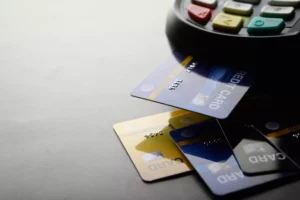
Did you receive an ACH return code R11? This article will explain what this return code means and how to solve it. The return codes for ACH transactions are important to understand if you want to guarantee that your company’s ACH process operates in a quick and timely manner.
So, what happens if an ACH payment is returned to the sender?
Don’t worry. NACHA (the National Automated Clearing House Association) ensures preciseness in processing. Payments made through the Automated Clearing House (ACH) allow companies in the United States to move money electronically between financial institutions. If the ACH network cannot collect funds from a customer’s bank account, they issue an ACH code (error message) stating the cause for the collection failure. There are over 80 ACH return codes, so it’s a good idea to become familiar with some of the more commonly seen numbers.
These error codes result from inadequate funds, canceled authorizations, or an erroneous entry of an account number, among other reasons. The codes provide exact information on why the transaction failed. To understand ACH error codes, it is necessary to understand what the ODFI and RDFI are.
ODFI is an abbreviation that stands for Originating Depository Financial Institution. On behalf of the originator, the ODFI enters into a contract with an ACH operator, which may be the Federal Reserve or the Clearing House, to move money electronically. Most major financial institutions have received approval from the ODFI to perform ACH money transfers. Payment gateways, payment processors, and ACH payment APIs are all examples of organizations that can act as ODFIs.
RDFI stands for Receiving Depository Financial Institution. The RDFI is the bank that is debited (charged) or credited (refunded) after a transaction takes place. Most banks and large financial institutions have been authorized as RDFIs, just as they have been allowed to serve as ODFIs. Third-party players, such as payment gateways, ACH payment APIs, and credit card processing companies, may also serve as RDFIs.
What Does ACH Return Code R11 Mean?
The ACH return code R11 stands for Truncation Entry Return. Truncation is the process of check clearing. It entails removing physical paper check processing and replacing it with electronic depositing. The return code phrase “Truncation Entry Return” is now known as “Customer Advises Entry Not in Accordance with the Terms of the Authorization.”
Formal Definition
An R11 return code is not considered an Unauthorized Return. The code, therefore, takes on the following characteristics:

1. The entry involves an Originator (the merchant) and Receiver (the merchant’s customer) where both know each other and have a relationship for which authorization to debit is present.
2. There is an error in payment that does not meet the terms of the authorization. For instance, the incorrect amount is listed or the payment was debited to the account before authorization.
3. For some check-derived inputs, such as point-of-purchase (POP), ARC, or BOC transactions, an ACH return code authorization may mean that inconsistencies may exist with the check amount or the transaction went through without notifying the Receiver.
*ARC transactions represent accounts receivable conversions that convert checks from customers into ACH deliveries. BOC references back-office conversion where businesses convert checks in the back office into ACH debit entries.
Solutions to Fix an R11 Return Code
If you get an ACH return code r11 when accepting ACH payments, it basically means you need to correct the return of an authorized debit, which contains one or more of the following errors:
- The debit entry was of the wrong amount
- The debit entry was debited before it authorization
- The debit entry was part of a transaction that was termed incomplete
- The entry was incorrectly initiated
In the case of POS, BOC, and ARC entries, the source document may be ineligible, or the receiver did not have enough notice. Also, the entry amount may not have been accurately received from the source document or check.
Therefore, you can correct the errors in the following ways:
- Correcting the wrong date for a debit
- Correcting a debit amount that was wrong
- Correcting a debit that was part of an incomplete transaction
When making a correction, you must originate the new transaction within 60 days of the return code r11 entry’s settlement date.



